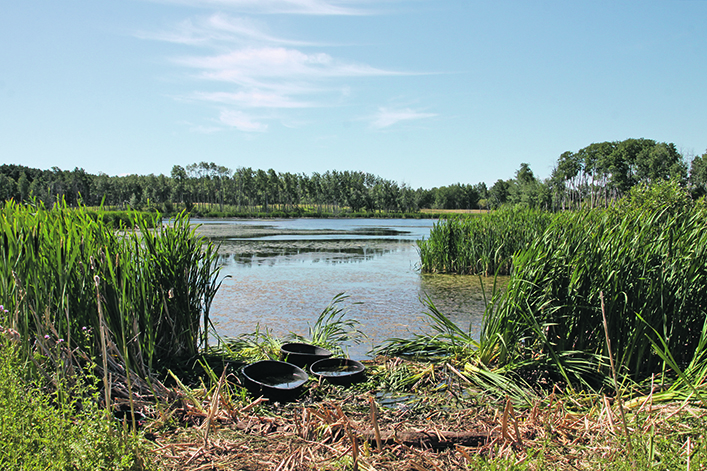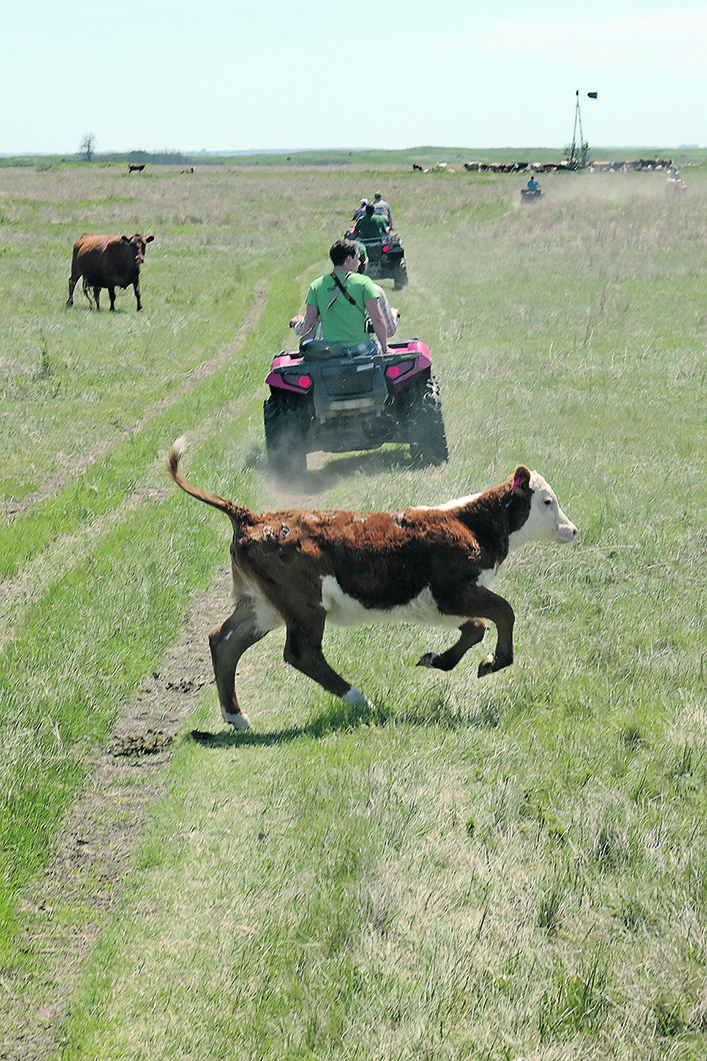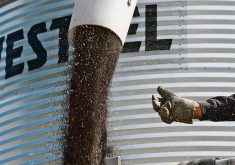Farm families do not lack for information when it comes to their children’s safety. There are targeted campaigns, checklists, seminars safety days and free educational materials from colouring books to video.
It seems none of these have had much effect, says Will Pickett, a researcher and epidemiologist at Brock University who specializes in the health of children, rural and agricultural health, violence and injury prevention and determinants of health.
The death rate among farm children hasn’t moved in more than 25 years. Clearly, something is being missed.
“The educational approaches to try and prevent these things, when they’re formally evaluated, usually there’s an effect in terms of changing people’s attitudes and their level of knowledge,” Pickett said.
“But there hasn’t been any study that I’m aware of that has shown that an educational initiative has actually changed rates of injury trauma.”
Pickett is said the safety of farm children is a subject he cares about a lot, based on his experiences growing up in a rural community in southwestern Ontario.
“My Dad was a coroner, so you’d hear stories and it sort of hits home.”
This attitude was cemented when he went to university and got a job working at a coroner’s office in Toronto, reading reports of farm accidents and injuries.
“There were just so many kids,” he said.
“And what was really kind of profound … you’d have these stacks of file folders and you’d have a stack that was maybe two feet high that are kids that are killed on tractors when they’re working or they’re run over. And then you had a stack that was twice as high that was little guys — like toddlers, preschoolers who were killed in accidents.
I think it’s so important and it’s not something people outside of the rural community hear a lot about.”

In a 2020 paper in the journal Preventative Medicine, Pickett and his colleagues from Alberta, Illinois and Wisconsin looked at 23 years of data from 1990 to 2012 coming out of the Canadian Agricultural Injury Reporting system.
They broke the data into two time periods:
- The period from 1990 to 2001 included reports of 253 deaths of farm children.
- The latter period had only 121 fatalities.
The researchers attributed the drop to declining farm populations because deaths per capita held steady at about four deaths per 100,000 children.
At the same time, accidental deaths among more urban children declined.
“The patterns are changing a little bit,” Pickett said.
“We also see there’s a real gender thing that goes on. Like, for every young girl or young woman that’s killed, there are four boys killed. And you see the same sorts of ratios for major traumas that end up in hospitals.”
The leading cause of fatality was tractor injuries, primarily passengers or bystanders being run over or due to rollovers.
Three other hazards also loomed large:
ATVs
As all-terrain vehicles have become standard equipment on farms, so has their toll on farm kids.
Pickett said that while coroners’ reports often show the victim was not wearing a helmet, these vehicles are inherently unstable and prone to flip and crush the operator.
“It’s instability and speed,” he said.
“I mean, I have an ATV and they’re a wonderful machine, but if they’re used in a manner that you become unbalanced, it doesn’t matter if you have a helmet on or not, you’re going to be in trouble.”
Skid-steers
Skid-steer loaders are another deadly hazard.
“There’s been some really awful tragedies where little kids have been riding in the front bucket and they hit a bump, they fall out and they get crushed,” Pickett said.
One such case resulted in an Ontario farmer being charged and convicted for the death of his four-year-old son. Occupational health and safety regulations are increasingly covering farm operations, although enforcement may lag.
“It’s one of the very few cases we’ve got that was actually litigated,” Pickett said.
“You may see that happening more. It has not happened traditionally. The usual description will be that the family has suffered enough.”
Drowning
Another leading cause of deaths among farm children was drowning, and the hazards here encompass a wide range.
“There’s a lot of drowning we see, and they’re drowning in all sorts of wild and wooly things, not just a lake or stream,” Pickett said.
Common hazards here include cisterns, dugouts, manure pits and slurries of various types.
None of these hazards are new to farm families and there is no shortage of information and advice on how to keep farm kids safe. So why are the rates of injury and death staying so stubbornly stable?
Pickett speculates one reason may have to do with farm culture, where children are brought up into a way of life, not just a way to make a living.
“The real high-risk groups are the wee ones, you know, as soon as they’re mobile … the one- to five-year-olds, and they’re often killed when a well-meaning parent brings them along into the work site.”
Farm parents want to teach their children both skills and values — a love of the land, the life and the work — but this can lead to tragedy.
“They’re making those decisions a lot of times for the benefit of the child because there’s a lot of good that comes from being exposed to work, and a lot of times they’re just coping,” Pickett said. “They’re trying to get work done and they turn their back and the kid gets away and something happens.”
Resistance to farm safety messages might also have cultural reasons. Initiatives so far have focused on a prescriptive approach, and no one, especially farmers, like to be told what to do.
“Something I’ve been thinking, sort of, people in the medical profession like me, impose certain ways of thinking that work in other situations,” Pickett said.

“You can impose rules and regulations, you can upgrade your machinery, you can change the environment. The problem is, with the farm community as a whole, is that they are very stoic. And they are very proud. And they’re very traditionalist. And they don’t embrace these things.”
What is needed is a new approach, one based on farmers and rural culture and values. Pickett has mulled it over with colleagues at the Canadian Agricultural Safety Association and come up with what he hopes is the beginning of a solution: go to farm families directly and ask them.
Resources For Child-Safe Farms
Unlike most other professions, farming puts parents, children and youth in a single environment for both work and play. This familiarity can make it hard to identify or even be aware of hazards and how to protect not only adults but their children. There are numerous organizations working to help keep future farmers safe, both in the way of information and live events. Here are a few:
- Canadian Agricultural Safety Association: www.casa-acsa.ca
- AgSafe Alberta: agsafeab.ca
- AgSafe B.C.: agsafebc.ca
- Manitoba Farm Safety (Safe Work Manitoba): www.safemanitoba.com/topics/Pages/Farm-Safety-Program.aspx
- Saskatchewan Farm Safety Program: www.saskatchewan.ca/business/safety-in-the-workplace/hazards-and-prevention/safety-in-professions-and-industry/farm-safety
- Saskatchewan Safety Council: www.sasksafety.org/agriculture-safety-resources.html
“I’d like to just step back from this and talk with farmers across the country about what are the barriers to changing the way that you do things?” he said.
“Is there a different way to approach this so that it gets kids the really good exposures they need to work and to embrace tradition but also keep them safe?”
Pickett and his colleagues have made a funding proposal to the federal Social Sciences and Humanities Research Council. If successful, they’ll be heading out to the field and ranches to find some answers to this persistent problem.
“I’m sort of stepping back from all the stats and saying, ‘what are people’s stories and what wisdom do they have about how we can change things?’ I would say the solutions are complex and they are deeply, deeply rooted in culture,” he said.
“But we need to ground the solutions in the wisdom of the community itself because we prevention specialists imposing things, you know, now we’ve got a 20 to 25 history and we can see it’s not changing that much. So, I’m looking forward to listening.”















